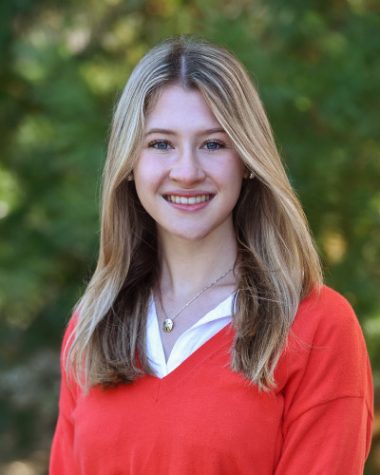Stem Scholars: A Highlight on Jo Demarco
March 28, 2023
At St. Luke’s, the STEM Scholars Program is offered to students who have interests in science, technology, engineering, and math. In the program, each student engages in the scientific research process, conducting faculty-mentored research on a topic of interest. STEM Scholars eventually present their findings at the SLS Scholars Symposium in April and write scientific journals by the end of the program in May.
One STEM scholar this year is Jo DeMarco ‘23, who is creating a 3D, digital, explorable, and to-scale model of the school. “Due to the time constraints, as well as the necessity to teach myself two programs, a new coding language, and how to read blueprints, the current model is restricted to the first floor of the library and the art gallery space,” explained DeMarco.
To create her project, DeMarco is using two main software programs: Blender, a free digital modeling software, and Unity, a famous game engine. She dedicated a portion of her summer to learning these two platforms, both of which were entirely new to her. “I am using Blender to construct the 3D model, and Unity allows my creation to be both explorable and shareable,” said DeMarco. She also emailed the head architect behind the newest wing of the school and gained privileged access to the school’s blueprints, which served as the reference for the 3D model she built up in Blender. Once the 3D model was finished, she exported it to Unity, where she coded a playable “character” and began adding in textures and detail work.
“I have always been fascinated by the different ways in which one can combine art and computer science. Computer science and digital design are the STEM disciplines wherein my strengths lie, so it only makes sense to play to my strengths and interests,” said DeMarco. She used to watch different YouTube videos of people making structures and characters in Blender and became interested in how animation and game design work.
DeMarco was inspired to create a to-scale model of the school because she wanted to learn more about computer science and make the project relevant to SLS: “Ideally, the project would combine my interests in human behavior, digital design, art, and coding, while also providing an opportunity to develop new skills. It also must be practical and helpful to others.”
As DeMarco started crafting her project, she faced numerous challenges.“I spent around three hours straight over break building a stairwell, which was kind of exhausting. There was also a period of time when if you tried to tour the school, you’d fall through the floor into an eternal void, which is, you know, not exactly ideal. The main challenge was teaching myself two entirely new and incredibly technical and confusing softwares. But, since it was something I was genuinely interested in learning, it really wasn’t that bad,” she said.
Despite the obstacles, DeMarco enjoys many aspects of her project. She specifically likes “adding in textures and lighting and bringing the model fully to life.” Demarco added, “I definitely plan on further exploring these softwares and different creative ideas.”
Currently, DeMarco is finished with the main sections, so she is working on the details. For instance, Demarco is adding bookshelves in the library, paintings in the art gallery, and chairs. “I hope that this project can be the starting point for many more students in the future; if more people add on to my model, we could one day have a fully explorable building modeled by students, for the students,” DeMarco said.
When giving advice to aspiring STEM scholars, DeMarco said, “Make sure you choose a project that genuinely interests you. It’s a lot of work, but it feels less like work if you’re actually engaged with and invested in your project. Also, be reasonable with your goals. While the first floor of the library doesn’t sound as impressive as a whole floor –– or a whole building for that matter –– scaling it down allowed me to be more precise and more detailed, making the project more feasible and, ultimately, better to present.”




